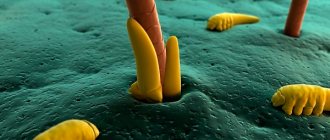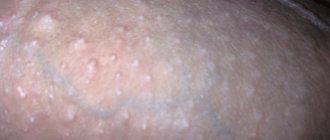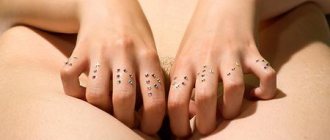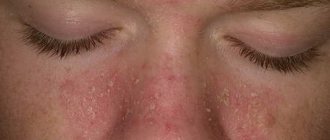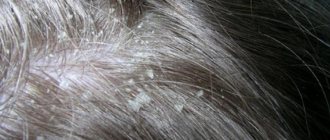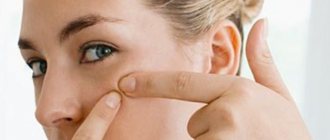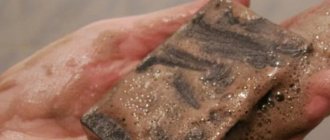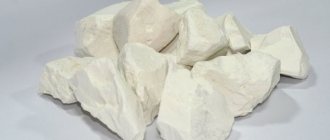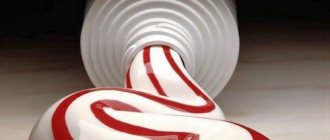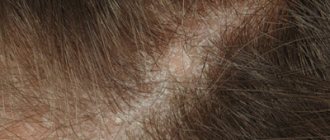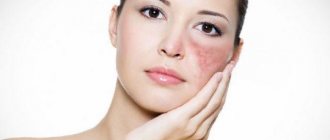Oily facial skin is a consequence of disturbances in the functioning of the sebaceous glands. When functioning unstable, they cause excessive sebum secretion, which causes an unpleasant oily sheen, blackheads, pimples and enlarged pores to appear on the face.
Oily skin tends to be shiny
- Causes of oily skin
- Treatment for oily skin
- Traditional remedies
- Treatment of facial skin with professional cosmetics
- Care for oily skin
Too oily facial skin becomes a favorable environment for bacteria to live. The surrounding dust and dirt penetrates deep into the skin and infects it. Enlarged pores cannot cope with a huge amount of harmful substances, and as a result, painful inflammations form on the face. To avoid this situation, oily skin needs to be treated at an early stage.
Professional care is organized by a specialist - a dermatologist, but if there is excessive sebaceous secretion, it is better to consult an endocrinologist. By eliminating the root cause of the disease, you can make your facial skin healthy and beautiful.
You need to take care of your face yourself. To do this, you need to wash your face and choose the right cosmetics. Folk remedies help restore skin health.
In addition to the unaesthetic appearance, the patient has to endure a number of other problems:
- skin rashes;
- subcutaneous acne;
- uneven complexion;
- greasy shine;
- painful sensations in the area of acne and more.
Sebum secretion
The face, scalp and chest have the highest concentration of sebaceous glands—each area of skin can have up to 900 of these glands per square centimeter. The sebaceous glands produce sebum through holocrine secretion, a process of programmed cell death. Cells called sebocytes dissolve and secrete sebum into the sebaceous glands.
Sebum passes through the follicular duct, which connects the sebaceous gland to the hair follicle. Growing hair lifts sebum up to the surface of the skin. Sebum production depends on changes in hormone levels. Sex hormones, especially testosterone, play a large role in regulating the activity of the sebaceous glands. Sebum production peaks shortly after birth and decreases during the first week of life. During puberty, testosterone levels increase, causing another surge in sebum production. Testosterone and sebum levels naturally decline with age.
Additional care for oily skin with acne
If the acne is inflamed, under no circumstances should you carry out any type of cleansing. You should first remove the inflammation (cure acne), and only then use a scrub or peeling. Pimples and blackheads are treated with special products that are applied pointwise. They usually contain zinc or salicylic acid.
How to remove acne?
Under no circumstances should they be squeezed out, especially with dirty hands or when they are inflamed. If the head has already come out, you should steam the skin and carefully remove it. Then you can squeeze out the remains (until the first drop of blood) and thoroughly disinfect the acne area with special products, for example, alcohol lotion or tea tree oil. The purulent stem of aloe and ordinary laundry soap are good for drawing out.
Functions of sebum
Sebum provides 90% of lipids - fat molecules on the surface of the skin. These lipids retain moisture and protect the skin from ultraviolet radiation and other harmful causes. It also transports fat-soluble antioxidants such as vitamin E to the surface of the skin. This action can prevent oxidative damage to the skin.
Meanwhile, sapienic acid and other fatty acids found in sebum help fight Staphylococcus aureus bacteria, which can cause staph infections and contribute to the development of atopic dermatitis. Many components of sebum, including its fatty acids and squalene, have anti-inflammatory properties.
Professional care for oily skin in the salon
Peels work great. It is in the salon that you can make medium and deep options, but only in the cold season. One of the popular procedures is mechanical facial cleansing. Professional care also includes phototherapy, which helps remove scars and acne marks. Cosmetologists advise taking a course of biodermabrasion. With the help of some manipulations, the skin is cleansed, especially since this procedure is not at all traumatic.
A more complex and effective treatment is a fractional laser cleaning session. And of course, in any salon you can get advice and recommendations from professional cosmetologists that are worth following.
Benefits of sebum
Sebum components support skin health in several ways besides fighting inflammation:
- Hydration
: Sebum retains moisture within the skin, which helps keep skin hydrated and firm. - Antioxidant transport
: Sebum transports fat-soluble antioxidants to the surface of the skin. Antioxidants are natural compounds that protect against the damaging effects of free radicals. - Protection against microorganisms
: Sebum is slightly acidic, with a pH of 4.5 to 6.0, as a result it helps prevent pathogens such as bacteria and viruses from entering the skin.
Sebum production changes in response to age-related hormonal fluctuations, certain medications, and lifestyle factors. Overproduction of sebum can lead to oily skin. People with oily skin may have larger pores and appear oily or shiny.
Nourishing mask recipes
If your skin is oily but flaky and you don’t know what to do, try using homemade mask recipes. They will help you quickly give your face a healthy look.
When using masks, the main condition is regularity. Usually one course every two to three weeks is enough to return the skin to a healthy state.
It is advisable to apply masks before going to bed so that after the treatment procedure you do not have to apply cosmetics to your face. Three main types of products are usually used to nourish the upper layers of the dermis: honey, dairy products, and vegetable oils.
After mixing them or adding some additional ingredients to them, we get recipes for various nourishing masks for flaky skin.
Honey
Compound:
- Honey – 2 tablespoons.
- Quail eggs – 3 pieces.
- Vegetable oil – 2 tablespoons.
All components should be thoroughly mixed and heated in a steam bath to 36 - 40 degrees. Apply the mixture in a thin layer every 5 minutes for 20 - 25 minutes. Wash off the mask with a decoction of soothing herbs or warm boiled water.
Curd No. 1
- Fat cottage cheese - 1 heaped tablespoon.
- Honey – 1 teaspoon.
- Full-fat milk – 3 tablespoons.
Mix the ingredients until the consistency of sour cream and apply to the face for 15 - 20 minutes, then rinse off. This mask perfectly moisturizes the skin, saturates it with nutrients and amino acids, and relieves symptoms of irritation. Perfect for oily skin that gets flaky in winter.
Curd No. 2
- Fat cottage cheese – 1 tablespoon.
- Carrot juice – 1 tablespoon.
- Olive oil – 1 tablespoon.
- Milk – 1 tablespoon.
Mix all ingredients until smooth and apply to problem areas of the face for 15 minutes. Wash off the mask with chamomile decoction. Rub your face with ice cubes.
Excess sebum
Excess sebum combined with dead skin cells can form a plug inside the pore, leading to acne. This plug also traps bacteria in the pores, which can cause inflammation. You can control oily skin using a gentle but effective skin care routine that includes products containing:
- beta hydroxy acid
- benzoyl peroxide
- glycolic acid
- salicylic acid
Dermatologists recommend that people with oily skin avoid oil- or alcohol-based cleansers. These products can irritate the skin, potentially causing even more oil production. When treating acne you can use:
- local and oral antibiotics
- retinoids
- hormone therapy
- corticosteroids
- light therapy
- chemical peels
Causes and treatment of oily facial skin
Oily shine, orange peel effect, acne, blackheads - without proper care, oily facial skin causes a lot of problems. Let's find out what causes excess oiliness and how to maintain healthy skin of this type.
Oily skin is not a pathology; it is one of the options along with normal, dry and combination skin. Moreover, those with oily skin look young for a long time. As a rule, wrinkles appear only after 40 years. But to look attractive, problematic facial skin needs special care.
Causes of oily skin – from hormones to nutrition
Oily skin is the result of increased work of the sebaceous glands. Sebum appears on the surface of the face and gives a shiny effect, mixes with keratinized cells and clogs the sebaceous passages, which creates a favorable environment for bacteria and provokes an inflammatory process.
The sebaceous glands enter an active phase during puberty. In most cases, after 25 years, when the body’s hormonal levels stabilize, oily skin transforms into a combination type: problem areas are localized in the T-zone. But if there is a hereditary predisposition, oily skin will not disappear.
Hormonal causes of oily skin are high levels of testosterone, which increases the rate of secretion of the sebaceous glands. Adrenaline also plays its part, so in stressful situations you need to remain calm. Oily skin often increases due to the use of hormonal contraceptives, sometimes during pregnancy and menopause.
In addition to genetics and hormones, external factors provoke excessive sebum production:
- poor diet – fatty, sweet and spicy foods increase sebum secretion;
- bad habits – nicotine and alcohol are strong carcinogens and disrupt metabolic processes in cells;
- high temperatures - tanning under the sun and in a solarium, washing with hot water, hot weather stimulate excess fat secretion;
- improper care - alcohol lotions remove moisture and dry out the skin; cleaning with scrubs in the presence of rashes increases the inflammatory process.
Common oily skin conditions
Purely cosmetic defects - an unkempt appearance, a shiny surface, an orange peel effect due to enlarged pores, a grayish tint, spider veins - unpleasant but safe properties of oily skin. It is much worse if sebum provokes the development of pathologies.
- Comedones are blackheads and white pimples. Blackheads are open comedones: fat and particles of dead cells clog the ducts of the sebaceous glands and oxidize; under the influence of the melanin pigment, the plug acquires a dark shade. White pimples are closed comedones (milia): sebum does not darken because it does not come into contact with oxygen and does not oxidize.
- Acne is an acne disease. If comedones are not treated, inflammation may begin at the site of blockage of the hair follicle, which provokes the formation of papulopustular acne. Papular acne has a reddish-bluish tint and can reach the size of a pea. After maturation, the papule becomes a pustule - a painful vesicle with pus. In the worst cases, papular acne develops into nodules and cystic cavities, which often leave scars.
- Oily seborrhea is a pathological condition accompanied by thickening of the stratum corneum of the epidermis, peeling and itching. Without treatment, seborrhea can spread to the scalp and cause alopecia - partial or complete baldness.
Caring for oily skin at home
To eliminate inflammation and give oily skin a blooming appearance, you need proper and regular care. Under no circumstances leave decorative cosmetics on overnight, avoid using alcohol-based cleansers, and do not overuse scrubs. Cool water and non-alcohol foams are suitable for washing - they clean well and do not dry out the skin. Optimal lotions are alcohol-free products with a neutral acid-base balance (pH7.0).
Proper nutrition for oily skin is boiled meat and fish, vegetables and fruits, cereals and bran. Choose foods with a high content of B vitamins. Limit the consumption of fried foods, sweets, spices, flour products, and carbonated drinks.
Proven folk remedies are herbal decoctions of horsetail, nettle, chamomile, mint and other plants with an anti-inflammatory effect. They are suitable for regular washing and weekly deep cleansing of the skin using steam baths. At the same time, it is recommended to take infusions orally.
Professional care for oily skin
Chemical peels remove the stratum corneum of the skin, and along with it comedones, age spots, wrinkles, and acne scars. Acidic products have an aggressive effect, so peeling can be done no more than once a month, preferably by a professional cosmetologist.
Mesotherapy consists of injections of vitamin compounds (meso-cocktails) into problem areas. The procedure nourishes the skin, removes spider veins, scars and other defects. In this case, injections violate the integrity of the skin and can cause inflammation. In addition, the procedure is painful and quite expensive.
Evisent products – affordable and effective care for oily skin
Vitamin complex “Brewer's yeast with sulfur” – treatment of the skin from the inside. Sulfur is considered a beauty mineral. Brewer's yeast normalizes cellular metabolism, removes toxins, and saturates the subcutaneous layer with collagen and oxygen. The drug also contains amino acids, 14 minerals and 17 vitamins, including group B and PP. After just one course of use (2 months), the skin becomes noticeably cleaner, and hair and nails become stronger at the same time.
Cleansing foam and tonic lotion "Evisent" with brewer's yeast and sulfur are recommended for daily care. Alcohol-free products do not dry the skin, dissolve fat plugs, regulate sebum production, and prevent the development of acne.
The effectiveness and safety of Evisent products have been clinically tested and proven in practice. With regular use, even oily, problematic skin will enjoy health and beauty.
Lack of sebum
Insufficient sebum production can also cause problems. The following factors can suppress sebum production:
- exposure to allergens or harsh chemicals, and certain oral contraceptives such as antiandrogens
- retinoids, such as isotretinoin (Accutane)
- malnutrition
- pituitary disorders
People with underactive sebaceous glands or too little sebum may have dry, flaky, and itchy skin. These symptoms may worsen if a person uses skin care products that contain harsh chemicals.
Moisturizers containing ceramides or humectants can help reduce dry skin. Ingredients include:
- squalene
- hyaluronic acid
- alpha hydroxy acids
- glycerol
- jojoba oil
You can treat dry skin at home with:
- exfoliate with a gentle facial scrub
- using a humidifier
- bathing in warm rather than hot water
- avoiding skin and hair care products containing alcohol and artificial fragrances
What should the diet be like?
The type of food consumed by a person directly affects the condition of his skin, so it is very important to adhere to a balanced diet that includes in the diet:
- oat bran, the main advantage of which is the ability to bind and remove harmful toxins and decay products remaining on the intestinal walls, poisoning the entire body, contributing to the deterioration of the quality of the skin surface;
- your menu should consist of porridges, milk soups without meat broth, boiled or steamed fish, poultry, beef, dairy products, fresh, raw vegetables and fruits. They contain valuable vitamins, microelements, as well as fiber, which absorbs all harmful metabolic products and quickly removes them from the body;
- reduce to a minimum the amount of salt, spicy foods, sweets and spices that provoke the production of large amounts of sebum;
- Replace butter with vegetable oil (sunflower, flaxseed or olive).
Make sure you have regular bowel movements. Constipation, especially long-term constipation, ensures the entry into the blood of putrefactive substances, decomposition products, which are delivered to the skin through the bloodstream.
When to see a doctor
A person may want to see a doctor if they have oily or dry skin that does not improve with treatments or home care strategies. Also, consult your doctor if you experience bothersome or uncomfortable skin symptoms, such as:
- persistent or numerous pimples
- inflamed pimples causing emotional or physical discomfort
- recurring skin infections
- dryness, redness or itching
- areas of dry skin that bleed
How to understand whether your skin type is oily or not?
It’s not difficult to understand – just carry out a special test. You need to wash your face with water and soap, preferably baby soap. You should not choose gel or products containing cream. The water should be cool without additives. After washing your face, pat dry with a towel. After waiting 3-4 hours, you can start the test. You need to apply a dry paper napkin to your face and inspect it. If there are oily spots on it, you should choose care for oily and problematic skin. Their absence indicates that the skin is most likely dry or normal. If they are located only in the T-zone, the skin may be combination.
